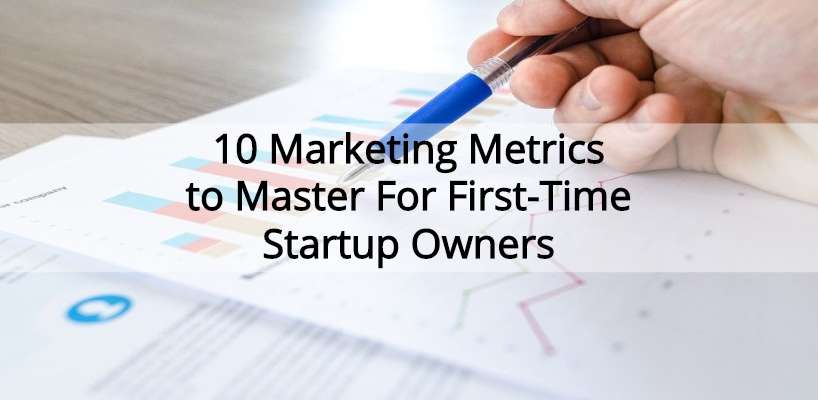10 Marketing Metrics to Master For First-Time Startup Owners
The main aim of starting a business is to make profits. There are a number of things that you should consider when starting a business. These include planning, execution, monitoring and so on.
You also, of course, need capital and a business idea to start a business. It is important to note that there is probably too much competition in your niche already, and effective marketing is what will set you apart –whether it’s web content marketing, SEM, SEO or the good old banner ads.
There are various ways through which you can market your products and services, and having a website with well-organized and optimized web content, and effective calls to actions are kind of the foundation. But, how do you measure your success? And which metrics should you keep an eye on? Well, here the top 10 most important metrics to track as a first-time startup owner.
1. Analyze web traffic.
Sounds obvious, right? You will be amazed by the percentage of startups that don’t do this. Traffic is essential to your business website, as you probably already know. Getting more traffic to your website can help you increase your potential customers.
Sometimes, your web traffic might show an upsurge. However, not all visitors will end up being your customers. In this case, you need to analyze your web traffic and understand user behavior and how to optimize your site. SEO tools like Google analytics can really come in handy here.
2. Keyword Density
Chances are you already know how important keywords are in your content, but perhaps you’re not quite sure how much is too much. Well, keyword density is essentially the number of keywords you have in your article in relation to the total number of words your article has.
Keyword density is usually expressed in percentage. I would say this largely varies depending on the type of content and the context. Averagely, we recommend a keyword density of 3-5%. While some can get away with up to 8%, anything more than 10% is in the red zone.
3. Social media optimization
You probably have social media accounts for your business already. Leverage social media platforms and masses to drive your marketing campaign strategy. You should establish a solid presence and encourage your followers to like and share the content of your pages. Make things as interactive as possible.
4. Track where your leads come from
As you gain a little more experience with online marketing, you will notice that it’s not only important to count your leads, but you should also track where they’re coming from.
Pay attention to where your customers are coming from and the content that is making them visit your site. This will help you focus and capitalize on the best performing lead generation channels. If you’re using Google Analytics, you can learn more about determining traffic source in this Google Support article.
5. Calculate the Return on Investment
Is the money that you are investing in your marketing campaign worth it? This is the question you should ask after starting the business. Calculate the profits and compare them with marketing expenses. In the long run, ensure that the profits exceed the expenses that are incurred in your business. This can help you a great deal.
6. Returning visitors
If a customer is pleased with your product/service, he or she will definitely come back for more. They will revisit your website and make a purchase. In addition, they can also recommend other people to try your products and services. Return customers is an indication and you are doing something right and can offer the much-needed motivation.
7. Cost of customer acquisition
You should not only analyze return customers but also determine the cost of attracting new customers. You will note that these returning customers were once new customers. It is important that you think about referral fees, discounts and anything else that can attract a new customer to your site.
8. Check the email performance
Most businesspersons normally use emails to communicate with their clients. It is important that you keep track of how many emails you are sending to your clients. You should also keep track of who you are sending these emails so that you can rate their effectiveness, especially if you’re running an email campaign. In addition, you should include a call-to-action in your email campaign.
9. Click-through rate.
This basically stems from those people who chose to click on a link that you have shared on various platforms. You should track these metrics because it represents the success of your content’s first impression. You will note that click-through rates are directly linked to your content’s images, headlines, titles and so forth. Track these metrics in conjunction with conversion rates so that you can determine how many people are clicking and visiting your site more often.
10. Page views and landing page conversion rates
Monitor your landing page conversion rates from time to time. Some pages are definitely going to outperform others. You should know these pages so that you can make the necessary improvements. Google Analytics can help you check both your keyword performance as well as your landing page traffic.

